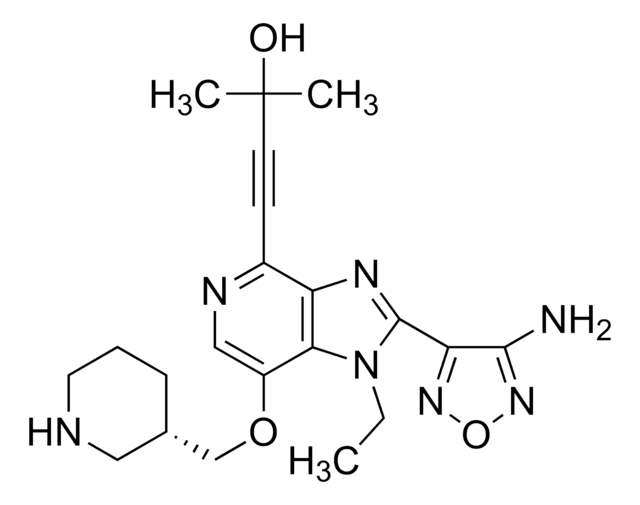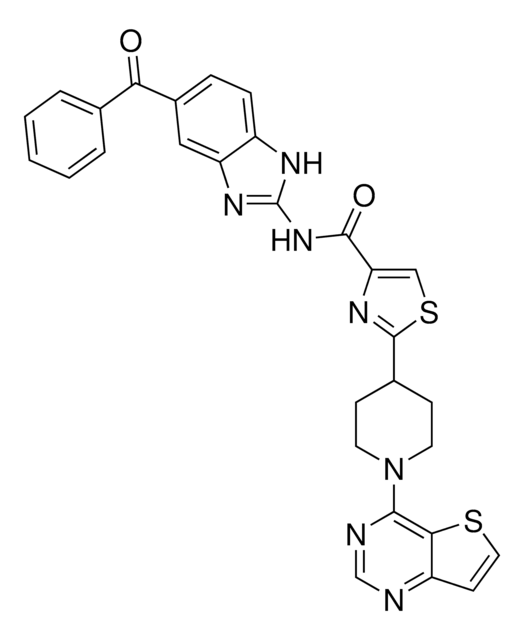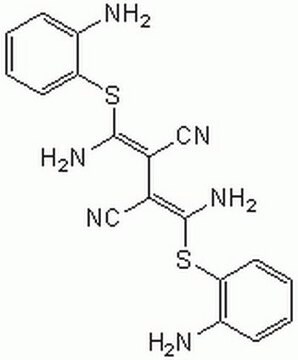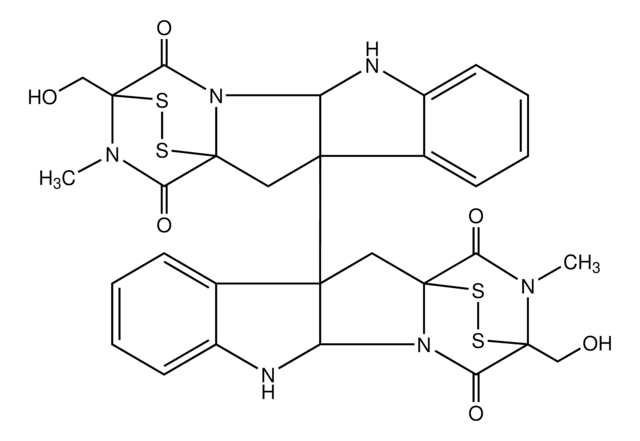おすすめの製品
アッセイ
≥98% (HPLC)
形状
powder
保管条件
desiccated
色
faint yellow to dark orange
溶解性
H2O: 2 mg/mL, clear (warmed)
保管温度
2-8°C
SMILES記法
FC(C=CC=C1)=C1CC2=C([N+](CC3)=CC4=C2C=CC(OC)=C4OC)C5=C3C=C(OCO6)C6=C5.[Cl-]
生物化学的/生理学的作用
KRN2 is a specific and potent inhibitor of nuclear factor of activated T cells 5 (NFAT5) that inhibits formation of NF-κB p65-DNA complexes. KRN2 suppresses migration of Fibroblast-like synoviocytes stimulated with TGF-β. KRN2 ameliorates experimental arthritis in mice.
KRN2 or 13-(2-fluorobenzyl)-berberine is a berberine derivative that effectively blocks the invasiveness of fibroblast-like synoviocytes (FLS). It is stable and orally bioavailable. It suppresses the production of proinflammatory cytokines to ameliorate arthritis severity.
保管分類コード
11 - Combustible Solids
WGK
WGK 3
引火点(°F)
Not applicable
引火点(℃)
Not applicable
適用法令
試験研究用途を考慮した関連法令を主に挙げております。化学物質以外については、一部の情報のみ提供しています。 製品を安全かつ合法的に使用することは、使用者の義務です。最新情報により修正される場合があります。WEBの反映には時間を要することがあるため、適宜SDSをご参照ください。
Jan Code
SML2464-25MG:
SML2464-VAR:
SML2464-5MG:
SML2464-BULK:
試験成績書(COA)
製品のロット番号・バッチ番号を入力して、試験成績書(COA) を検索できます。ロット番号・バッチ番号は、製品ラベルに「Lot」または「Batch」に続いて記載されています。
Eun-Jin Han et al.
EBioMedicine, 18, 261-273 (2017-04-12)
Nuclear factor of activated T cells 5 (NFAT5) has been implicated in the pathogenesis of various human diseases, including cancer and arthritis. However, therapeutic agents inhibiting NFAT5 activity are currently unavailable. To discover NFAT5 inhibitors, a library of >40,000 chemicals
Inessa Yanovsky et al.
Journal of medicinal chemistry, 55(23), 10700-10715 (2012-11-16)
The cascade of events that occurs in Alzheimer's disease involving oxidative stress and the reduction in cholinergic transmission can be better addressed by multifunctional drugs than cholinesterase inhibitors alone. For this purpose, we prepared a large number of derivatives of
Naeun Lee et al.
Frontiers in immunology, 10, 270-270 (2019-03-16)
The nuclear factor of activated T cells (NFAT5), also known as a tonicity-responsive enhancer-binding protein, was originally identified as a key transcription factor involved in maintaining cellular homeostasis against hypertonic and hyperosmotic environments. Although NFAT5 has been expressed and studied
ライフサイエンス、有機合成、材料科学、クロマトグラフィー、分析など、あらゆる分野の研究に経験のあるメンバーがおります。.
製品に関するお問い合わせはこちら(テクニカルサービス)








